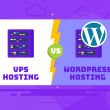Cloud development environments (CDEs) are rapidly transforming how software is built, tested, and deployed. As businesses embrace cloud computing, developers now have powerful tools that allow them to work from anywhere, collaborate easily, and maintain a secure infrastructure. Unlike traditional development environments, which require local setups on each developer’s computer, CDEs leverage remote servers and cloud technology.
This means coders can access their development environment and resources directly through a web browser or lightweight client, eliminating the need for complex local installations. In this blog, we explain what cloud development environments are, how they differ from local setups, and highlight the main benefits of using cloud development. So, let’s dive straight in.
What Are Cloud Development Environments?
Cloud development environments are virtual platforms hosted in the cloud, where developers can build, test, and deploy software. Unlike traditional development setups that require developers to install software locally, CDEs provide an online workspace accessible from any internet-connected device. This remote workspace includes all the tools needed for development, such as code editors, compilers, and debuggers.
With a cloud development environment, the entire setup runs on powerful servers in data centers, giving developers access to high-performance resources. This remote approach makes it easy to scale up resources, collaborate with team members in real-time, and maintain consistent environments across teams. Cloud-based development solutions make it possible to work in a reliable and secure environment without worrying about configuring multiple machines.
How Cloud Development Differs from Local Development
Like cloud servers vs physical servers, cloud development and local development differ mainly in how resources are accessed and managed. In local development, each developer sets up their own environment on their computer, which includes installing software, libraries, and other dependencies. An unlimited bandwidth VPS plan can help you streamline the process by offering maximum flexibility and performance.
On the other hand, cloud development environments are hosted remotely, meaning that developers access everything through a browser or a lightweight client. All you need is a fast and dependable VPS to access the cloud. This approach offers a consistent environment for every user, reducing setup time and minimizing issues caused by configuration differences. CDEs are beneficial for remote teams, as team members can work from any location with internet access. However, cloud environments depend on reliable internet connections, and performance may vary depending on the cloud provider’s infrastructure and the developer’s network speed.
What are the Benefits of Cloud Development?
Cloud development environments bring numerous advantages to software development. Here are the top benefits.
Improved Security
Cloud development environments offer advanced security features, which make them safer than local setups in many cases. In a CDE, the code and development tools are stored on secure, remote servers rather than individual machines. This setup minimizes risks like data loss, hardware theft, and unauthorized access.
CDEs also simplify compliance with security standards and enable access control settings, making it easier to secure data. Additionally, many cloud providers offer built-in security features such as data encryption, automated backups, and regular security updates, further protecting your code and data from breaches.
Higher Productivity
Cloud development environments can boost productivity by streamlining setup processes and providing immediate access to development tools. Developers don’t need to spend time configuring their local environments. Instead, they can start coding right away in a pre-configured cloud setup.
This saves valuable time and ensures that every developer works in a consistent environment, reducing issues caused by varying configurations. With quick access to updated libraries, frameworks, and tools, cloud development enables a faster workflow, allowing developers to focus on building and testing code rather than dealing with setup issues.
Elevate Your Website with SSD Dedicated Hosting
Utilize the full potential of your applications with the robust features and undeniable benefits of UltaHost’s SSD Dedicated Servers. Unlock a new level of performance, scalability, and security for your business.
Better Collaboration
One of the standout benefits of cloud development is its potential to improve collaboration. CDEs enable multiple developers to work on the same codebase in real-time, which streamlines teamwork and problem-solving. Collaboration tools within CDEs, like live code editing and commenting, enhance the communication process.
Team members can review each other’s code, make suggestions, and even debug together from different locations. This seamless collaboration is especially valuable for remote teams and reduces bottlenecks, keeping projects moving forward efficiently.
Greater Scalability
Cloud development environments are highly scalable, meaning they can adapt to a team’s growing needs without needing hardware upgrades. Developers can scale up their resources instantly, adding CPU power, memory, or storage as needed.
This flexibility allows teams to handle larger, more complex projects without investing in additional local infrastructure. Scalability also supports continuous integration and continuous deployment (CI/CD) practices, as teams can increase resources to accommodate high-demand testing and deployment phases without any significant downtime.
Lower Configuration Drift
Configuration drift occurs when development environments differ from each other due to manual changes or updates. Cloud development environments reduce configuration drift by providing a centralized environment that remains consistent for all users.
Since the environment is pre-configured and hosted on remote servers, updates and changes are applied universally. This uniformity minimizes bugs and compatibility issues, as every developer works in the same, standardized environment. As a result, teams can expect fewer errors and smoother deployments across different stages of development.
What are the Downsides of Cloud Development?
Cloud development environments come with some limitations. Let’s walk you through the list.
Complex Initial Setup
Setting up a cloud development environment often involves configuring permissions, integrating third-party tools, and customizing workflows, which can be time-consuming. This process may require technical expertise, especially if multiple users need specific access levels. As a result, the initial setup of a CDE may seem daunting for beginners and smaller teams.

Reliance on Connectivity
Cloud development environments depend on stable internet connectivity. Any interruption or slow connection can hinder development productivity and may disrupt work on critical projects. This reliance on the internet makes CDEs challenging to use in areas with unstable or limited connectivity, as performance will vary based on network quality.
Ongoing Overheads
While many CDEs offer affordable basic packages, advanced features, increased resources, or additional storage often come at an extra cost. These recurring expenses can add up over time, especially as teams expand. Additionally, premium features or scaling resources as projects grow can further increase overhead, impacting a team’s budget.
Top 3 Popular Cloud Development Environments
Here are three popular CDEs widely used in the industry, each with its key strengths and weaknesses.
Google Cloud Workstations
Google Cloud Workstations is a customizable cloud-based development environment that allows developers to work on projects from any location with ease. It supports integrated development environments (IDEs) such as IntelliJ, Visual Studio Code, and PyCharm, giving users flexibility in their tool choices. Additionally, it provides high scalability, making it ideal for teams of all sizes.
Key Features
- Customizable IDEs: Supports various IDEs, including IntelliJ, Visual Studio Code, and PyCharm, tailored to meet diverse development needs.
- Integrated Security: Offers built-in security features, such as access controls, to protect data and manage team permissions effectively.
- Scalable Resources: Allows teams to add or remove resources on demand, accommodating growth or scaling down as needed.
Pros
- The platform uses popular IDEs, offering developers their preferred workspaces for enhanced productivity.
- Easily connects with Google Cloud services, simplifying resource management and data access.
- Built-in security measures help protect data, ideal for enterprise-level projects with sensitive information.
Cons
- Premium resources and additional features can become costly over time
GitHub Codespaces
GitHub Codespaces provides a cloud-based development environment directly integrated with GitHub, making it ideal for seamless repository access and collaboration. Built on Visual Studio Code, it allows developers to work from any device without complex setups, streamlining workflows for GitHub-based projects.
Key Features
- Direct GitHub Integration: Offers one-click access to repositories, simplifying code review and collaboration within GitHub.
- Pre-configured Environments: Supports easy setup with pre-configured settings, making it easy to start coding right away.
- Customizable Development Containers: Allows users to tailor environments with Docker containers, enabling consistency across different team members.
Pros
- Makes repository access and collaboration smooth, ideal for GitHub users.
- Users can start coding almost instantly, reducing time spent on setup.
- Supports containerized development, ensuring consistency across different machines
Cons
- Primarily based on Visual Studio Code, which may not suit developers preferring alternative IDEs
AWS Cloud9
AWS Cloud9 is a cloud-based IDE that offers a robust, secure environment for coding and debugging applications in real-time. It is designed for collaboration and integrates seamlessly with AWS resources, making it a popular choice for teams using Amazon Web Services.
Key Features
- Integrated Terminal and Debugger: Offers built-in tools for debugging and terminal access, streamlining the development process.
- Real-time Collaboration: Enables team members to work together on code and see changes live, ideal for collaborative projects.
- AWS Integration: Allows easy access to AWS services and resources directly from the development environment.
Pros
- Perfect for teams already using AWS, simplifying integration and resource management.
- Real-time collaboration features enhance teamwork and speed up code reviews.
- Useful for in-depth development, with tools integrated directly into the IDE.
Cons
- Must use AWS, which may not be ideal for users reliant on other cloud services
Conclusion
Cloud development environments offer developers a flexible, secure, and collaborative way to build software. Although they come with certain limitations, such as internet dependence and ongoing costs, their advantages such as improved productivity, scalability, and robust security make them valuable tools for modern teams.
Are you looking for a reliable web host for your website? Choose Ultahost’s Managed Dedicated Server for effortless scalability and extreme performance. Enjoy managed servers, DDoS protection, and SSD NMVe storage, starting at just $74.83 per month.
FAQ
What are cloud development environments?
Cloud development environments (CDEs) are online platforms where developers build, test, and deploy software, accessible remotely through browsers or lightweight clients.
What are the benefits of using cloud development environments?
CDEs offer improved security, streamlined collaboration, enhanced productivity, and easy scalability, making them ideal for remote teams and growing businesses.
Is switching to a cloud server good for my business?
Switching to a cloud server improves flexibility, supports remote work, and reduces infrastructure costs, benefiting many businesses in a digital age.
How do vendors charge for cloud services?
Vendors typically charge per usage, based on factors like storage, compute power, and data transfer, or offer subscription-based pricing plans.
What are the pros of cloud computing?
Cloud computing provides scalability, cost savings, flexibility, data security, and seamless access, making it ideal for businesses of all sizes.
What are the cons of cloud computing?
Cloud computing can lead to potential data privacy concerns, dependency on reliable internet, and ongoing subscription or usage costs.
How do I set up a cloud development environment?
Set up a CDE by choosing a provider, configuring permissions, integrating necessary tools, and customizing settings to meet your team’s needs.












